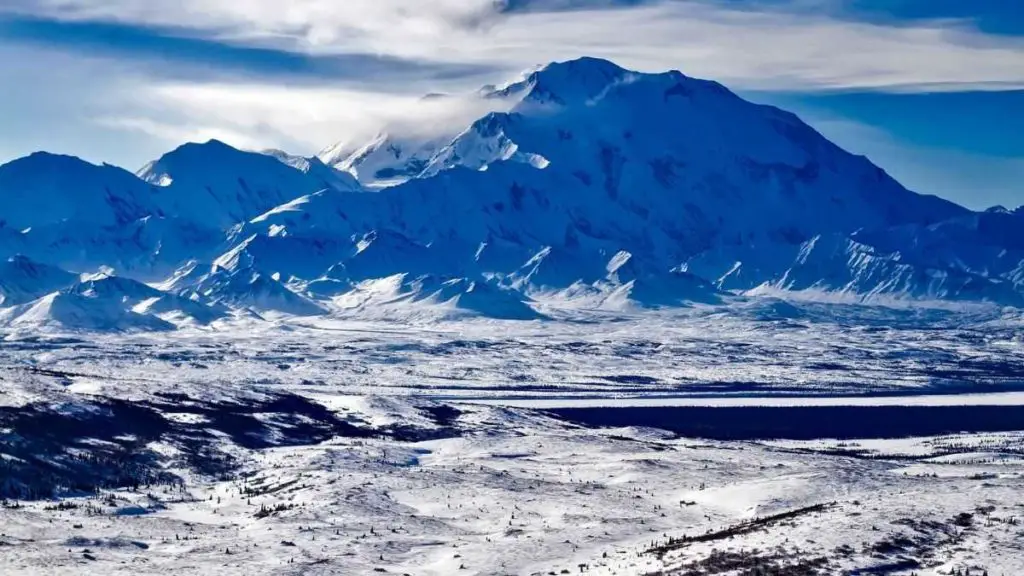There are two main types of glaciers:
- Continental: Ice sheets are dome-shaped glaciers that flow away from a central region. They are unaffected by underlying topography (e.g., Greenland and Antarctic ice sheets).
- Alpine or valley glaciers are glaciers in mountains that flow down valleys.
Contents
Alpine Glaciers

Alpine glaciers start high up in the mountains in bowl-shaped hollows called cirques. As the glacier grows, the ice flows out of the cirque and into a valley glacier.
Mountain Glaciers
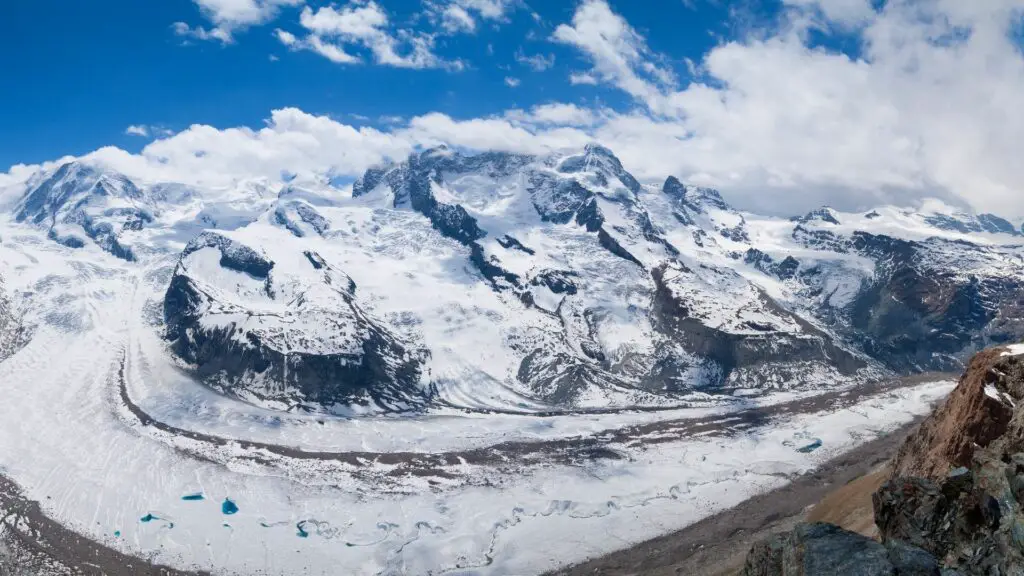
Mountain glaciers form in high mountainous regions. They usually flow out into icefields that spread over several peaks. The largest mountain glaciers are found in Arctic Canada, Alaska, The Andes Mountains, and the Himalayas.
Valley Glaciers
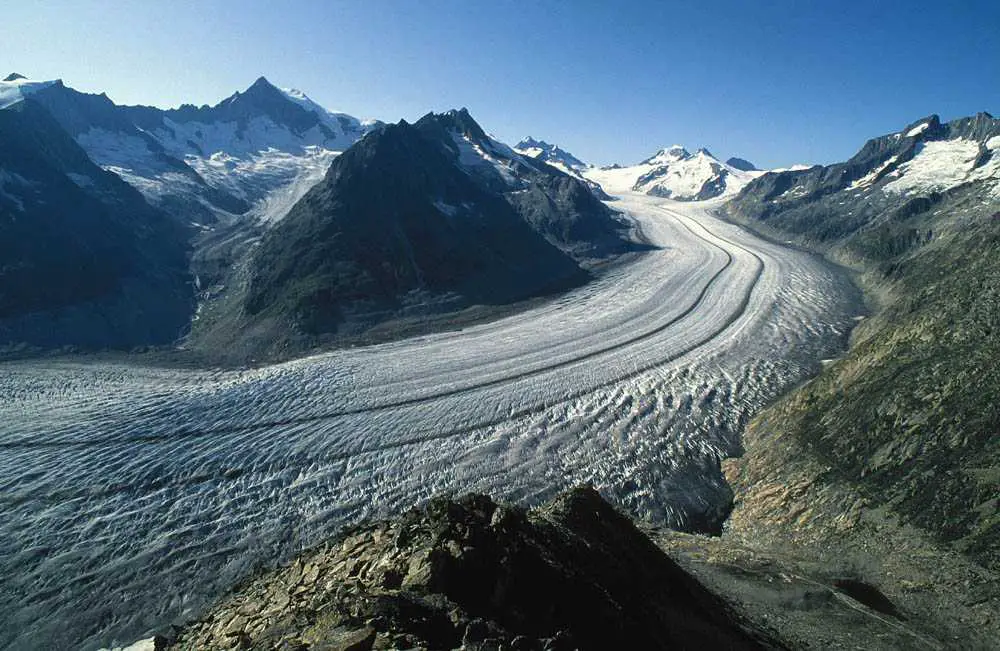
Valley glaciers usually start out as ice fields or mountain glaciers. These glaciers form when an outlet glacier slips and slides away from the ice field. They usually spread out toward gorges, basins, and valleys.
form when an outlet glacier slides away from an icefield. However, most valley glaciers typically originate from mountain glaciers and stretch out towards gorges, basins, and of course, valleys. When the ice spills down the valley
Tidewater Glaciers
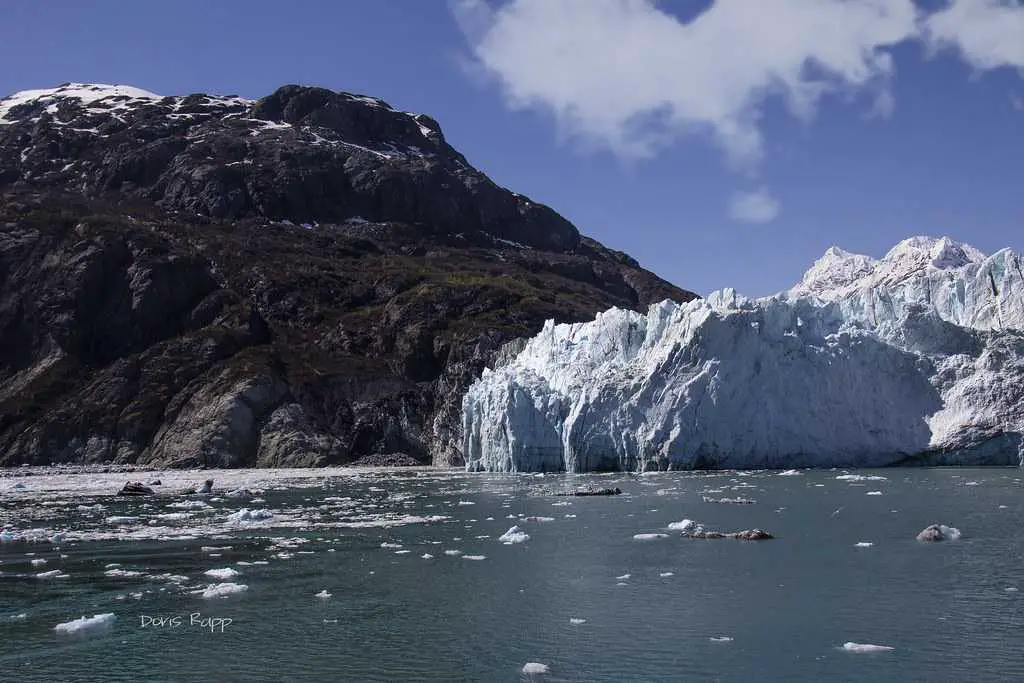
Tidewater glaciers occur when a valley glacier flows into the sea. These glaciers usually create small icebergs, through a process known as calving, when this occurs.
Piedmont Glaciers

Piedmont Glaciers form as a result of valley glaciers. When a valley glacier empties into relatively flat plains and spreads out into bulb-like lobes, the end result is a piedmont glacier.
Hanging Glaciers
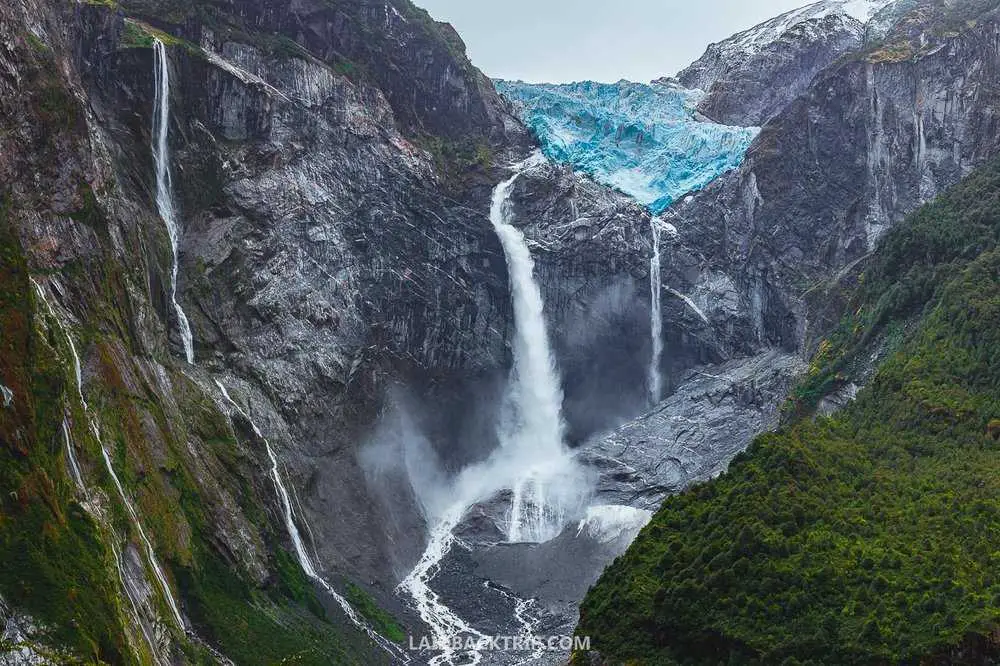
Hanging glaciers form when valley glaciers stop flowing near the top of a cliff. These glaciers can also form when a valley shrinks and thins, leaving behind tributary glaciers in smaller valleys.
Cirque Glaciers
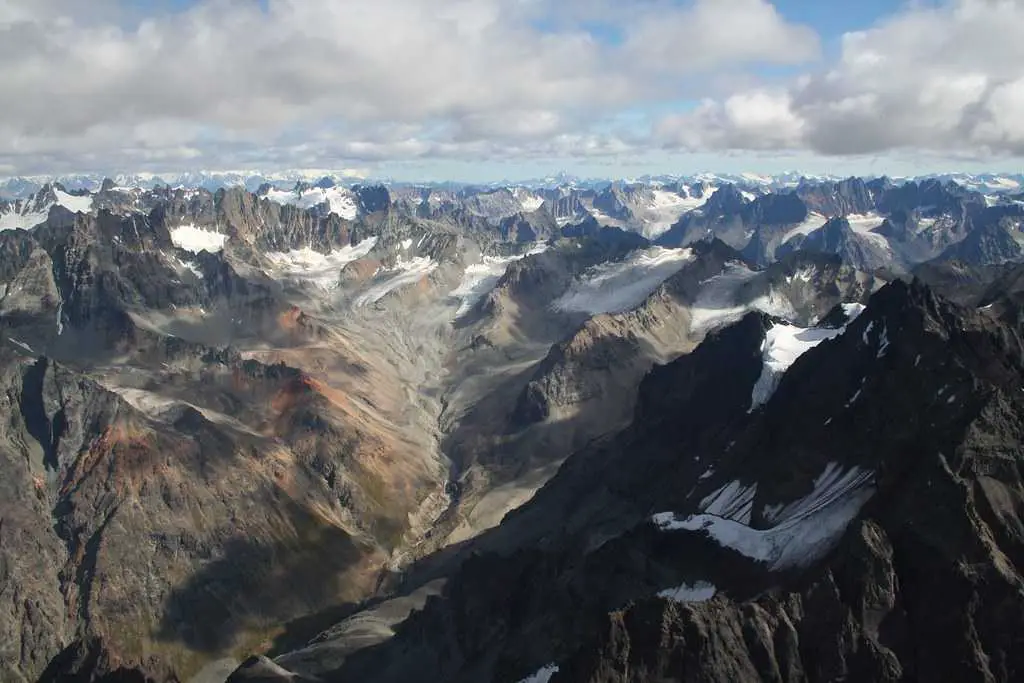
Cirque Glaciers are wide and usually form on high mountainsides. The space that these glaciers occupy usually has a hollow bowl-like shape.
Rock Glaciers
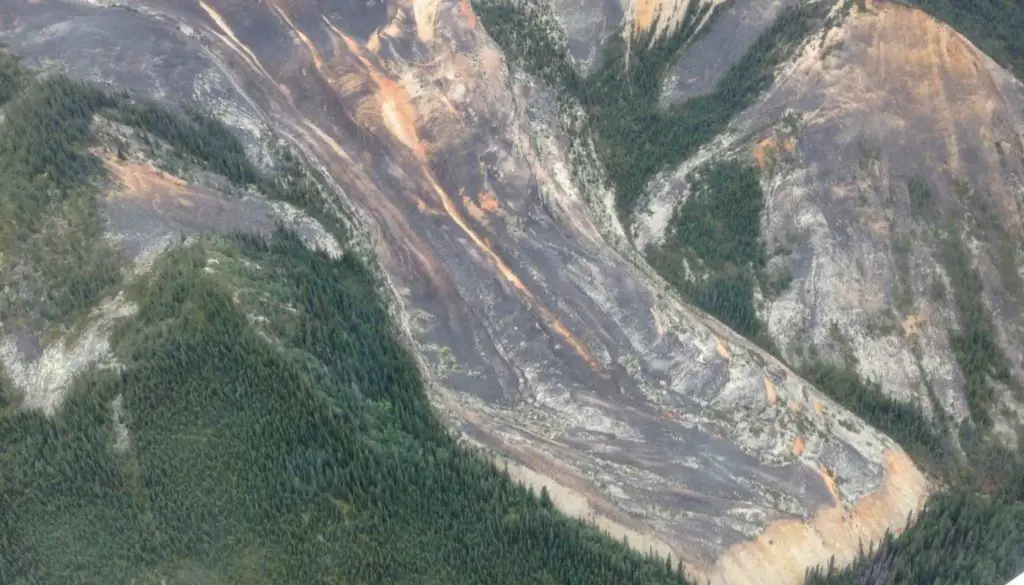
Rock Glaciers are a combination of rock. ice, snow, mud, and water. As gravity pulls the mass down the side of the mountain, the glaciers form.
Outlet Glaciers
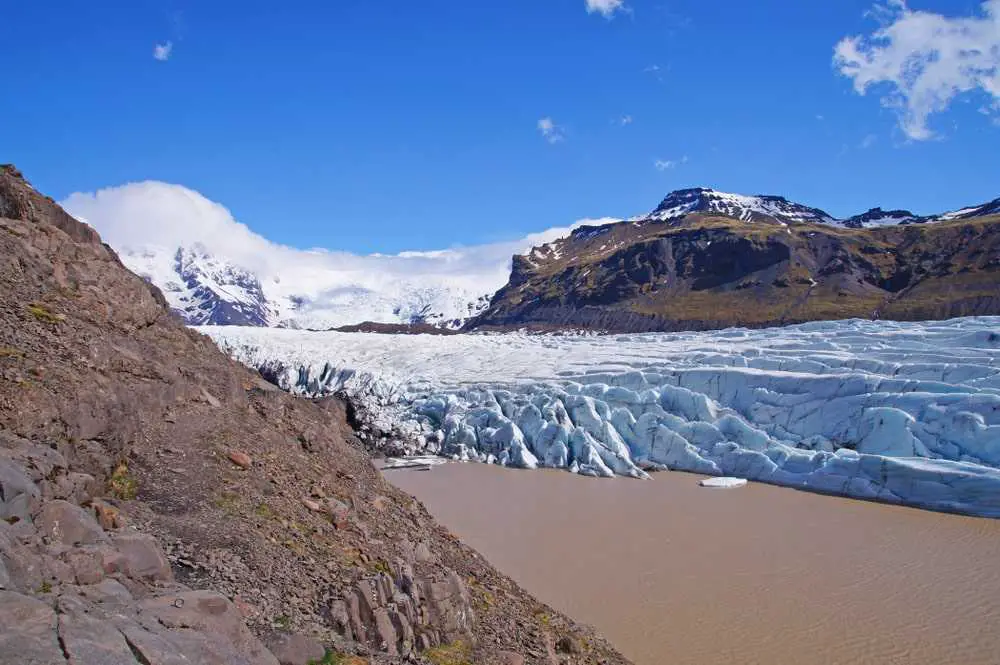
Outlet glaciers form from ice caps, ice sheets, or ice fields. Their shape and flow are usually influenced by the underlying landscape.
What Is a Glacier?
Glaciers are made up of fallen snow that, over many years, compresses into large, thickened ice masses. This dense body of dense ice that is constantly moving under its own weight.
How Are Glaciers Formed?
Glaciers start to form where snow piles up faster than it melts. The snow soon begins to compress or become denser. Eventually, the snow changes from light fluff-like crystals to hard, rounded ice pellets. As new snowfall occurs, this granular ‘old’ snow becomes buried and the process repeats.
What Is The Largest Type of Glacier?
The largest type of glacier is a continental ice sheet. The definition of an ice sheet is a glacier that covers an area of over 50,000km2. These glaciers completely cover other topographical features like mountains and valleys.
Types of Glaciers (An Image)

References:
- Mountain Glacier – an overview
- Valley (mountain) glaciers
- Valley Glaciers
- What types of glaciers are there? | National Snow and Ice Data Center
- Landsystem of ‘clean’ valley glaciers – AntarcticGlaciers.org
- Ice calving – Wikipedia
- National Natural Landmarks – National Natural Landmarks (US National Park Service)
- Largest Piedmont Glacier
- Hanging glacier – Wikipedia
- Cirque glacier – Wikipedia
- Rock Glaciers (US National Park Service)
- Wikipedia: Glacier
- Why is glacier ice blue?
- How are glaciers formed? | National Snow and Ice Data Center
- Glacier Power | ASF
- National Geographic – Glacier
- 17.1 Types of Glaciers – Physical Geology, First University of Saskatchewan Edition
- There are 9 Types of Glaciers in the World: discover all of them
- https://www.worldatlas.com/articles/the-longest-non-polar-glaciers-in-the-world.html
- Alpine glaciers | Glaciers | Earth processes | OneGeology Kids | eXtra
- https://www.ux1.eiu.edu/~cfjps/1300/glaciers.html
